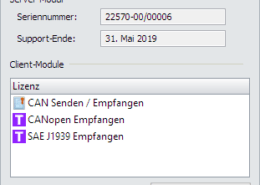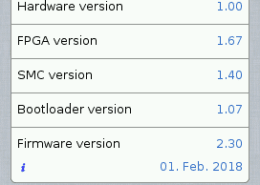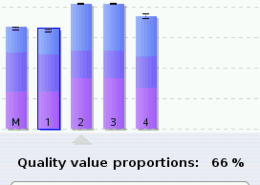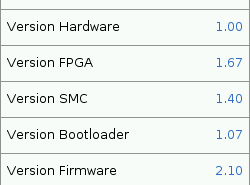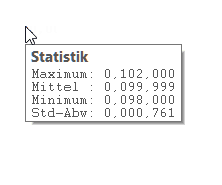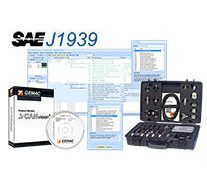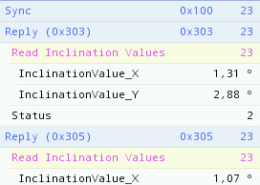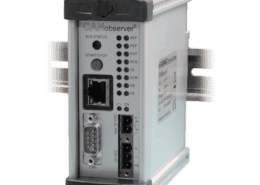Empfohlenes Bittiming und Buslänge
Bittiming as in CiA Draft Standard 102 Version 2.0
| Bit rate (1) | Bus length | Nominal Bit time | Number of time quanta per bit |
Location of sample point time quanta |
Location of sample point percentage |
| 10 kbit/s | 5000 m (3) | 100 µs | 16 | 14 | 87,5 % |
| 20 kbit/s | 2500 m (3) | 50 µs | 16 | 14 | 87,5 % |
| 50 kbit/s | 1000 m (3) | 20 µs | 16 | 14 | 87,5 % |
| 125 kbit/s | 500 m (2) | 8 µs | 16 | 14 | 87,5 % |
| 250 kbit/s | 250 m (2) | 4 µs | 16 | 14 | 87,5 % |
| 500 kbit/s | 100 m | 2 µs | 16 | 14 | 87,5 % |
| 800 kbit/s | 50 m | 1,25 µs | 10 | 8 | 80 % |
| 1 Mbit/s | 25 m | 1 µs | 8 | 6 | 75 % |
Oscillator frequency: 16 MHz +/-0.1% (1000 ppm)
Sampling mode: Single sampling SAM = 0
Synchronization mode: Recessive to dominant edges only SYNC = 0
Synchronization jump width: 1 * tq SJW = 0
Phase Segment 2: 2 * tq TSEG2 = 1
Note 1: Rounded bus length estimation (worst case) on basis 5 ns/m propagation delay and a total effective ECU-internal (Elec. Control Unit) in-out delay as follows:
- 1M-800 kbit/s: 210ns
- 500 – 250 kbit/s: 300 ns (includes 2 * 40 ns for optocouplers)
- 124 kbit/s: 450 ns (includes 2 * 100 ns for optocouplers)
- 50 – 10 kbit/s: 1.5 tq; Effective delay = delay recessive to dominant plus dominant to recessive divided by two.
Note 2: For bus length greater than about 200 m the use of optocouplers is recommended. If optocouplers are placed between CAN controller and transceiver this affects the maximum bus length depending upon the propagation delay of the optocouplers
i.e. ‑4m per 10 ns propagation delay of employed optocoupler type.
Note 3: For bus length greater than about 1 km bridge or repeater devices may be needed.










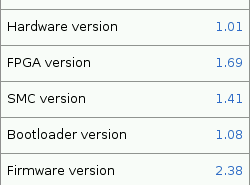
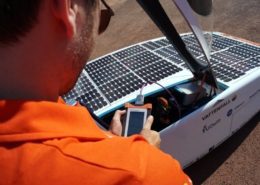
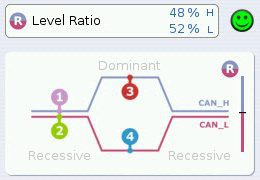

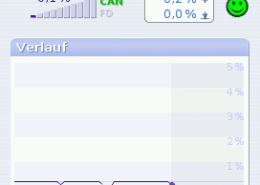 GEMAC Chemnitz GmbH
GEMAC Chemnitz GmbH
